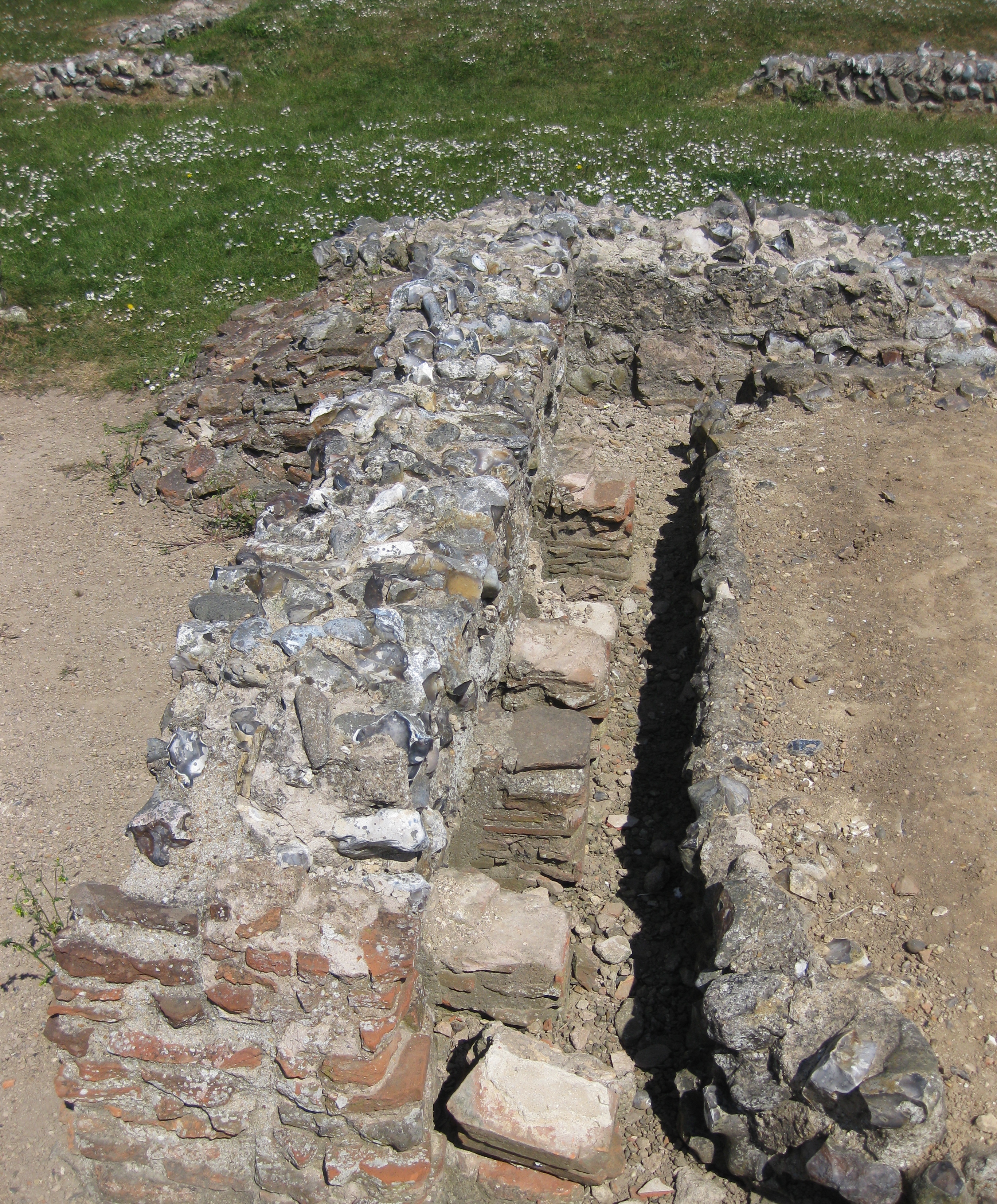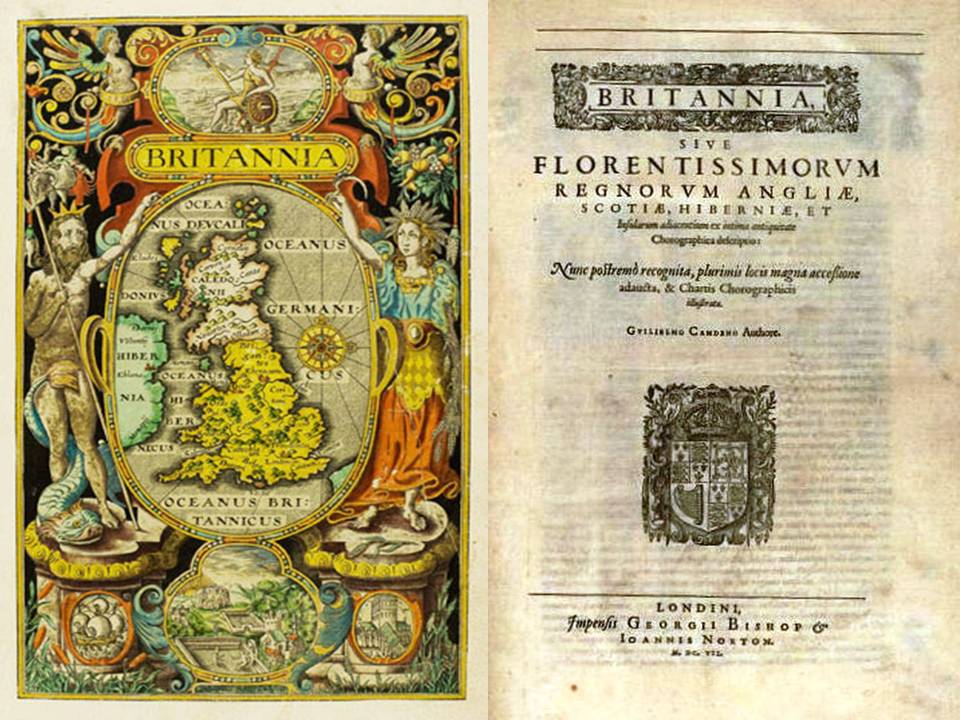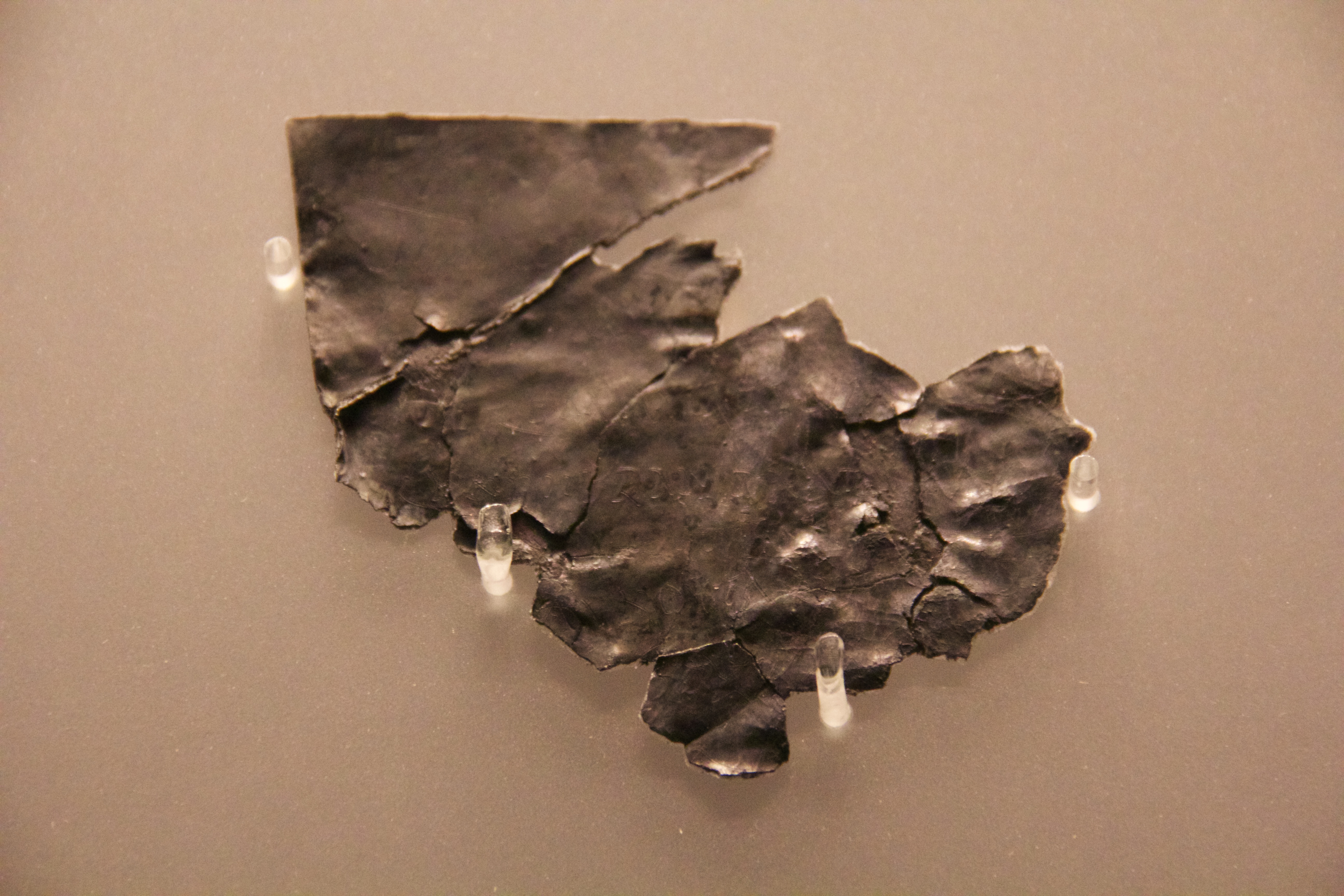|
Gariannonum
Gariannonum, or Gariannum, was a Roman Saxon Shore fort in Norfolk, England. The ''Notitia Dignitatum'', a Roman Army "order of battle" from about AD 400, lists nine forts of the Saxon Shore in south and east England, among which one was called Gariannonor. It has been much discussed over the years in terms of spelling (''Gariannonum'', ''Garianonum'', ''Gariannum''), purpose (whether it really was intended for defence against Saxon raids), and location (whether it was Burgh Castle or the Caister-on-Sea site). The fort is listed as being commanded by the ''Praepositus equitum stablesianorum'', implying its garrison was a cavalry of a form originated in the late 3rd century, the Equites Stablesiani. Both proposed sites show archaeological evidence for military occupation beginning at around the time this type of unit began use. The name ''Gariannonum'' is thought to derive from a river-name, ''Gariennus'', mentioned in Ptolemy's ''Geography''. This is thought to derive in turn fr ... [...More Info...] [...Related Items...] OR: [Wikipedia] [Google] [Baidu] |
Burgh Castle (Roman Fortification)
Burgh Castle is the site of one of nine Roman Saxon Shore forts constructed in England around the 3rd century AD, to hold troops as a defence against Saxon raids up the rivers of the east and south coasts of southern Britain. It is located on the summit of ground sloping steeply towards the estuary of the River Waveney, in the civil parish of Burgh Castle, in the county of Norfolk (but until 1974 in Suffolk). This fort was possibly known as ''Gariannonum'', although the single record that uses the name may perhaps be referring to the Roman site at Caister-on-Sea. Between the mid-7th and 9th centuries the site was possibly occupied by a monastic settlement, and in the 11th and 12th centuries a Norman motte and bailey castle existed there. Etymology In Roman times Burgh Castle was apparently known as ''Gariannonum'' or ''Gariannum'', a name that appears in a single source, the ''Notitia Dignitatum'', a Roman Army "order of battle" from about 400 AD. The identification was once t ... [...More Info...] [...Related Items...] OR: [Wikipedia] [Google] [Baidu] |
River Yare
The River Yare is a river in the English county of Norfolk. In its lower reaches it is one of the principal navigable waterways of The Broads and connects with the rest of the network. The river rises south of Dereham to the west to the village of Shipdham. Above its confluence with a tributary stream from Garvestone it is known as the Blackwater River.Ordnance Survey of Great Britain From there it flows in a generally eastward direction passing Barnham Broom and is joined by the River Tiffey before reaching Bawburgh. It then skirts the southern fringes of the city of Norwich, passing through Colney, Cringleford, Lakenham and Trowse. At Whitlingham it is joined by the River Wensum and although the Wensum is the larger and longer of the two, the river downstream of their confluence continues to be called the Yare. Flowing eastward into The Broads it passes the villages of Bramerton, Surlingham, Rockland St. Mary and Cantley. Just before Reedham at Hardley Cross (erecte ... [...More Info...] [...Related Items...] OR: [Wikipedia] [Google] [Baidu] |
Saxon Shore
The Saxon Shore () was a military command of the Late Roman Empire, consisting of a series of fortifications on both sides of the English Channel. It was established in the late 3rd century and was led by the " Count of the Saxon Shore". In the late 4th century, his functions were limited to Britain, while the fortifications in Gaul were established as separate commands. Several well-preserved Saxon Shore forts survive in east and south-east England. Background During the latter half of the 3rd century, the Roman Empire faced a grave crisis: Weakened by civil wars, the rapid succession of short-lived emperors, and secession in the provinces, the Romans now faced new waves of attacks by barbarian tribes. Most of Britain had been part of the empire since the mid-1st century. It was protected from raids by native Celtic Britons in the north by the Hadrianic and Antonine Walls, while a fleet of some size was also available. However, as the frontiers came under increasing extern ... [...More Info...] [...Related Items...] OR: [Wikipedia] [Google] [Baidu] |
Caister Roman Site
Caister Roman Site is a Roman Saxon Shore fort, located in Caister-on-Sea, Norfolk, England. It was constructed around AD 200 for use by units of the Roman army and navy, and was occupied until around 370-390 AD. This fort was possibly known as Gariannonum, although the single record that describes it as such may also mean the Roman site at Burgh Castle. Description The fort was originally in size and roughly square in shape, with large stone perimeter walls high, earth ramparts and ditches of in length on all four sides. There were defensive towers at the corners and fortified gate houses in the middle of each sideEnglish Heritage Visitor Information Panels At the time of its construction, the site of the fort would have been on the north side of an estuary, with a pebbled street from the fort's south gate leading a short distance to a harbour or docks. In around AD 260 a fort at Burgh Castle was constructed on the opposite side of the estuary, with both forts probably servi ... [...More Info...] [...Related Items...] OR: [Wikipedia] [Google] [Baidu] |
English Heritage Sites In Norfolk
English usually refers to: * English language * English people English may also refer to: Culture, language and peoples * ''English'', an adjective for something of, from, or related to England * ''English'', an Amish term for non-Amish, regardless of ethnicity * English studies, the study of English language and literature Media * ''English'' (2013 film), a Malayalam-language film * ''English'' (novel), a Chinese book by Wang Gang ** ''English'' (2018 film), a Chinese adaptation * ''The English'' (TV series), a 2022 Western-genre miniseries * ''English'' (play), a 2022 play by Sanaz Toossi People and fictional characters * English (surname), a list of people and fictional characters * English Fisher (1928–2011), American boxing coach * English Gardner (born 1992), American track and field sprinter * English McConnell (1882–1928), Irish footballer * Aiden English, a ring name of Matthew Rehwoldt (born 1987), American former professional wrestler ... [...More Info...] [...Related Items...] OR: [Wikipedia] [Google] [Baidu] |
English Heritage
English Heritage (officially the English Heritage Trust) is a charity that manages over 400 historic monuments, buildings and places. These include prehistoric sites, a battlefield, medieval castles, Roman forts, historic industrial sites, Listed building, listed ruins, and architecturally notable English country houses. The charity states that it uses these properties to "bring the story of England to life for over 10 million people each year". Within its portfolio are Stonehenge, Dover Castle, Tintagel Castle, and the "best-preserved" parts of Hadrian's Wall. English Heritage also manages the London blue plaque scheme, which links influential historical figures to particular buildings. When originally formed in 1983, English Heritage was the operating name of an executive non-departmental public body of the Her Majesty's Government, British Government, officially titled the Historic Buildings and Monuments Commission for England, that ran the national system of heritage prot ... [...More Info...] [...Related Items...] OR: [Wikipedia] [Google] [Baidu] |
Henry Swinden
Henry Swinden (1716–1772) was an English antiquary, known for his history of Great Yarmouth, Norfolk. He worked as a schoolmaster and then land-surveyor. Works Swinden became a close friend of John Ives, who supported him over 20 years in collecting material for ''History and Antiquities of the Ancient Burgh of Great Yarmouth'', Norwich, 1772. The work was brought out by Ives for the benefit of Swinden's widow; he also erected a mural tablet in St. Nicholas Church, Yarmouth, to Swinden's memory. Swinden associated with Thomas Martin of Palgrave, as Ives did; he acknowledged help with his work from James Nasmith. It drew on earlier work of Henry Manship, and was abridged in the Norfolk history of Charles Parkin Charles Parkin (1690–1765) was an English clergyman and antiquarian. He was rector of Oxburgh in Norfolk, and assisted Francis Blomefield on his history of the county, completing it after Blomefield's death. Life The son of William Parkin of L .... Swinden had pu ... [...More Info...] [...Related Items...] OR: [Wikipedia] [Google] [Baidu] |
William Camden
William Camden (2 May 1551 – 9 November 1623) was an English antiquarian, historian, topographer, and herald, best known as author of ''Britannia'', the first chorographical survey of the islands of Great Britain and Ireland that relates landscape, geography, antiquarianism, and history, and the ''Annales'', the first detailed historical account of the reign of Elizabeth I of England. Early years William Camden was born in London. His father Sampson Camden was a member of The Worshipful Company of Painter-Stainers. He attended Christ's Hospital and St Paul's School, and in 1566 entered Oxford ( Magdalen College, Broadgates Hall, and finally Christ Church). At Christ Church, he became acquainted with Philip Sidney, who encouraged Camden's antiquarian interests. He returned to London in 1571 without a degree. In 1575, he became Usher of Westminster School, a position that gave him the freedom to travel and pursue his antiquarian researches during school vacations. ''Br ... [...More Info...] [...Related Items...] OR: [Wikipedia] [Google] [Baidu] |
Breydon Water
Breydon Water is a biological Site of Special Scientific Interest at Great Yarmouth, Norfolk, England. It is a Local Nature Reserve, a Ramsar site and a Special Protection Area. It is part of the Berney Marshes and Breydon Water nature reserve, which is managed by the Royal Society for the Protection of Birds (RSPB). It is a large stretch of sheltered estuary. It is at the gateway to The Broads river system on the eastern edge of Halvergate Marshes. It is the UK's largest protected wetland. It is long and more than wide in places. Breydon Water is overlooked at the southern end by the remains of the Roman Saxon Shore fort at Burgh Castle. Centuries ago, Breydon Water would have been one large estuary facing the sea. At the western end the water may be considered to start at the confluence of the River Yare and River Waveney; smaller sources including The Fleet flow in from the surrounding marshland. Safe passage for boats is indicated by red and green marker posts. Unlike ... [...More Info...] [...Related Items...] OR: [Wikipedia] [Google] [Baidu] |
River Bure
The River Bure is a river in the county of Norfolk, England, most of it in the Broads.Ordnance Survey (2005). ''OS Explorer Map OL40 - The Broads''. . The Bure rises near Melton Constable, upstream of Aylsham, which was the original head of navigation. Nowadays, the head of navigation is downstream at Coltishall Bridge. After Aylsham Lock and Burgh Bridge, the Bure passes through Buxton Lammas, Coltishall, Belaugh, Wroxham, Horning, past St. Benet's Abbey, through Oby, Acle, Stokesby, along the northern border of the Halvergate Marshes, through Runham and Great Yarmouth where it meets Breydon Water and flows into the sea at Gorleston. It has two major tributaries, the River Thurne and the River Ant. There is also Muck Fleet which connects the Trinity Broads (Ormesby, Rollesby and Filby Broad) to the main network. Other minor tributaries include the River Hor, which joins the Bure just upstream of Hoveton, The Mermaid which merges at Burgh-next-Aylsham and ... [...More Info...] [...Related Items...] OR: [Wikipedia] [Google] [Baidu] |
River Waveney
The River Waveney is a river which forms the boundary between Suffolk and Norfolk, England, for much of its length within The Broads. The earliest attestation of the name is from 1275, ''Wahenhe'', from ''*wagen + ea'', meaning the river by a quagmire. Course The source of the River Waveney is a ditch on the east side of the B1113 road between the villages of Redgrave, Suffolk and South Lopham, Norfolk. The ditch on the other side of the road is the source of the River Little Ouse which continues the county boundary and, via the Great Ouse, reaches the sea at King's Lynn. It is thus claimed that during periods of heavy rainfall Norfolk can be considered to be an island. The explanation of this oddity is that the valley in which the rivers rise was formed not by these rivers, but by water spilling from the periglacial lake known as Lake Fenland. This was a periglacial lake of the Devensian glacial period, fifteen or twenty thousand years ago. The ice sheet closed the natural drai ... [...More Info...] [...Related Items...] OR: [Wikipedia] [Google] [Baidu] |
Common Brittonic
Common Brittonic (; ; ), also known as British, Common Brythonic, or Proto-Brittonic, is a Celtic language historically spoken in Britain and Brittany from which evolved the later and modern Brittonic languages. It is a form of Insular Celtic, descended from Proto-Celtic, a theorized parent language that, by the first half of the first millennium BC, was diverging into separate dialects or languages. Pictish is linked, most probably as a sister language or a descendant branch. Evidence from early and modern Welsh shows that Common Brittonic was significantly influenced by Latin during the Roman period, especially in terms related to the church and Christianity. By the sixth century AD, the languages of the Celtic Britons were rapidly diverging into Neo-Brittonic: Welsh, Cumbric, Cornish, Breton, and possibly the Pictish language. Over the next three centuries, Brittonic was replaced by Scottish Gaelic in most of Scotland, and by Old English (from which descend M ... [...More Info...] [...Related Items...] OR: [Wikipedia] [Google] [Baidu] |





